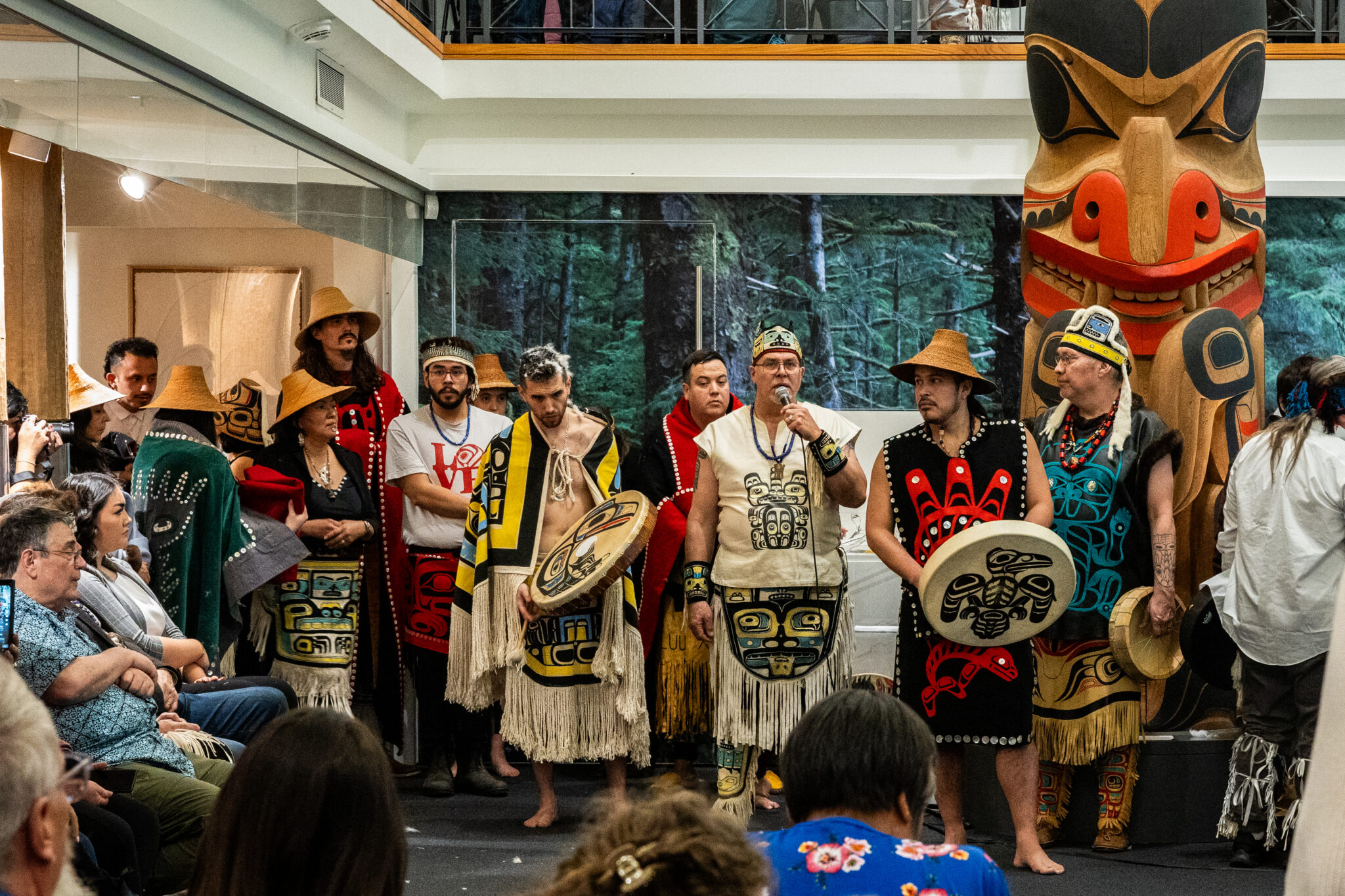
Haida Gwaii’s Ancestral Sentinels: A Traveler’s Guide to the Living Totem Pole Map
Forget conventional maps charting mere roads and towns. To truly navigate Haida Gwaii, the remote archipelago off Canada’s Pacific coast, one must consult a map drawn not on paper, but etched into monumental cedar, standing sentinel in ancient village sites. This is a journey into the heart of the Haida Nation, a profound cultural immersion where traditional totem poles are more than art; they are the enduring narratives of a people, their history, laws, and spiritual connection to their ancestral lands. For the discerning traveler seeking an experience beyond the ordinary, understanding the locations of these magnificent structures is to unlock the very soul of this mystical place.
Haida Gwaii, often called the "Islands of the People," is a place of unparalleled natural beauty and deep cultural significance. It is here that the Haida have thrived for millennia, their culture intricately woven into the temperate rainforests and teeming Pacific waters. Central to their identity are the totem poles – towering works of art, carved from single red cedar trees, depicting crests and figures that tell family histories, commemorate events, and honor the deceased. These aren’t just relics of the past; they are living testaments, slowly returning to the earth, yet their stories resonate with a power that transcends time.
The Language of Cedar: Understanding Haida Totem Poles

Before embarking on this unique mapping adventure, it’s crucial to appreciate what these poles represent. Each figure carved into the cedar – Raven, Eagle, Bear, Killer Whale, Frog, Beaver, and many more – holds specific meaning, often representing family lineage (crest figures) or characters from oral traditions. The arrangement of these figures tells a specific story or conveys a particular message.
There are several types of traditional Haida poles:
- Mortuary Poles: These poles often housed the remains of a high-ranking individual in a cavity at the top, or symbolized their passing.
- Memorial Poles: Erected in memory of a deceased chief or prominent person, often depicting their crests and achievements.
- House Frontal Poles: Standing at the entrance of a longhouse, these poles identified the family living within and often included a human-sized opening at the base for entry.
- Interior House Poles: Supporting the massive roof beams of a longhouse, these were also carved with crest figures.
- Welcome Poles: Often found at the edge of a village, extending an invitation or warning to visitors.


These poles were not merely decorative. They were legal documents, historical records, and spiritual conduits, meticulously carved with stone tools and later, iron tools, by master carvers whose skills were passed down through generations. To locate them is to trace the very veins of Haida history.
Navigating the Ancestral Map: Key Locations and Experiences
The traditional totem pole sites are predominantly located in the southern part of Haida Gwaii, within the protected boundaries of Gwaii Haanas National Park Reserve, National Marine Conservation Area Reserve, and Haida Heritage Site. Access to these areas is highly regulated and requires careful planning, permits, and often, a guided expedition, typically by boat or floatplane. This controlled access ensures the preservation of these fragile sites and fosters a deeply respectful encounter.
-

SGang Gwaay (Ninstints) – UNESCO World Heritage Site:
This is arguably the most iconic and profoundly moving of all Haida village sites. Located on a remote island off the southwest coast of Haida Gwaii, SGang Gwaay is a UNESCO World Heritage site renowned for its standing mortuary and memorial poles, slowly succumbing to the elements. The journey here is an adventure in itself, often involving boat travel through unpredictable Pacific waters.Upon arrival, visitors are greeted by Haida Watchmen, cultural guardians who live on site during the summer months, protecting the poles and sharing their knowledge. Walking amongst the ghostly echoes of longhouses, marked by depressions in the earth, and standing before the weathered poles with their fading, yet still powerful, crests is an intensely spiritual experience. The atmosphere is one of profound reverence, a testament to the resilience and artistry of the Haida people. The poles here, some over a century old, represent a specific moment in time, frozen in their slow decay, offering an unparalleled glimpse into the grandeur of Haida ancestral villages. This is not merely seeing a totem pole; it is experiencing a living, breathing history.
-
K’uuna (Skedans):
Located on Louise Island, K’uuna is another significant ancient village site, accessible within Gwaii Haanas. While perhaps less immediately dramatic than SGang Gwaay in terms of standing poles, K’uuna offers a different perspective. Here, the remnants of many house frontal poles, once part of imposing longhouses, lie amidst the verdant embrace of the rainforest. The stories here are equally rich, detailing the lives of the Eagle and Raven clans who inhabited this thriving community. The Haida Watchmen at K’uuna also provide invaluable insights, sharing the oral histories and cultural significance of the site, often pointing out carvings that are barely visible beneath moss and lichen, bringing them to life through narrative. -
Hlk’yah Llnagaay (Cape Ball) & Kay Llnagaay (Tanu):
These are other important historical village sites within Gwaii Haanas, offering further opportunities to explore the ancestral landscape. While the standing poles may be fewer or more decayed, the presence of the Haida Watchmen and the sheer natural beauty of the locations make them worthwhile. Kay Llnagaay, in particular, holds a significant place in Haida history and is the site of a modern pole raising, demonstrating the continuity of Haida culture. -
Haida Heritage Centre at Kay Llnagaay (Skidegate):
While not an ancient village site, the Haida Heritage Centre, located in Skidegate on Graham Island (the largest island in Haida Gwaii), is an indispensable starting point for any traveler interested in Haida culture and totem poles. This world-class facility houses an extensive collection of Haida art, artifacts, and historical exhibits, providing crucial context for the ancient sites.Crucially, the Centre also features a magnificent array of contemporary totem poles, carved by modern Haida artists. These poles stand proudly in front of the Centre and within its impressive "Performing House" (a modern longhouse), showcasing the vibrant continuation of Haida carving traditions. Here, you can witness poles being carved, learn about the symbolism from the artists themselves, and see how the ancient stories are reinterpreted for contemporary times. This location acts as the "key" to understanding the "map" of ancestral poles, providing the knowledge base necessary for a truly enriching experience in Gwaii Haanas.
-
W’dlaaw Gum (Windy Bay) – Legacy Pole:
Another modern marvel that deserves a place on this "map" is the Legacy Pole at Windy Bay, also within Gwaii Haanas. Raised in 2013, this monumental pole was carved by a team of Haida artists and community members, commemorating the 20th anniversary of the Gwaii Haanas Agreement – a landmark co-management agreement between the Haida Nation and the Government of Canada. This pole stands as a powerful symbol of reconciliation, cultural resurgence, and the ongoing stewardship of Haida Gwaii. Its presence demonstrates that the tradition of carving and raising poles is not confined to the past but is a living, evolving practice. -
Old Massett (Northern Graham Island):
In the northern village of Old Massett, travelers can experience the living Haida culture firsthand. While ancient poles are rare here, the village is a hub for contemporary Haida artists. Visitors can explore workshops, galleries, and often see poles in various stages of carving. This provides an excellent opportunity to engage directly with the carvers, understand their process, and appreciate the immense skill and dedication required for this art form. Seeing a pole come to life from a massive cedar log connects the ancient past with the vibrant present.
The Travel Experience: Beyond the Map
Accessing these sites is not a casual endeavor. It requires planning, booking with reputable Haida-owned or operated tour companies, and securing permits for Gwaii Haanas. The journey itself is an integral part of the experience – navigating by zodiac through mist-shrouded fjords, flying over emerald islands, and hiking through ancient forests. The remoteness ensures that those who make the journey are truly committed to cultural immersion and respectful travel.
The Haida Watchmen program is fundamental to this experience. These cultural ambassadors, residing at the ancient village sites, are direct descendants of the people who once lived there. They share their oral histories, explain the significance of the poles, and ensure the sites are treated with the utmost respect. Their presence transforms a historical visit into a personal, intergenerational encounter.
Beyond the poles, Haida Gwaii offers unparalleled natural beauty: ancient rainforests teeming with unique flora and fauna, opportunities for kayaking among marine wildlife, and encounters with black bears (the largest subspecies in the world). The islands are a sanctuary for countless bird species, whales, and sea lions, adding another layer of wonder to the journey.
Why This Journey Matters
To follow the map of Haida totem pole locations is to embark on a pilgrimage. It is a journey that educates, inspires, and humbles. It teaches the importance of oral tradition, the resilience of Indigenous cultures, and the profound connection between people and their land. It underscores the ongoing legacy of the Haida Nation, whose art continues to speak volumes, standing tall against time and tide.
This is not a passive tourist attraction; it is an active engagement with living history and a vibrant culture. The experience of standing before these ancestral sentinels, hearing the stories they tell, and feeling the deep reverence of the Haida Watchmen, imprints itself upon the soul. For the traveler seeking genuine cultural depth and an unforgettable adventure, Haida Gwaii’s totem pole map offers an unparalleled journey into the heart of a truly extraordinary place. It is an invitation to listen, learn, and be transformed by the enduring power of cedar and story.

